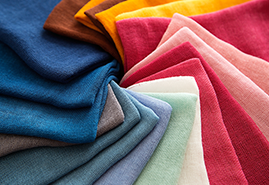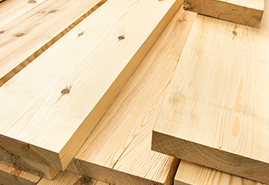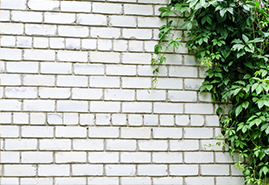Why Biomimic?
Biomimic Coat’s Special Features
Biomimic Coat is a liquid photocatalytic solution
Based on patented technology, it's a special photocatalytic liquid formula that has undergone improvement after improvement. With these improvements, it can be applied in various places and environments.
In order to easily coat various materials at low temperatures, it is necessary for it to be neutral, have few impurities,
have a colloidal suspension with a small particle size or to be a solution, and to have a special base material contributing to adhesion. After significant development, the new coating agent "Biomimic Coat" is now ready for market.
Biomimic Coat is neutral, contains no impurities, and can even be applied to none acid resistant materials such as metals.
This means it has the major advantage that densification of titanium dioxide and adhesion to a surface can be achieved at low temperatures.
Therefore, it is possible to coat materials with no heat resistance.
It also has the advantage of being very stable and easy to handle.
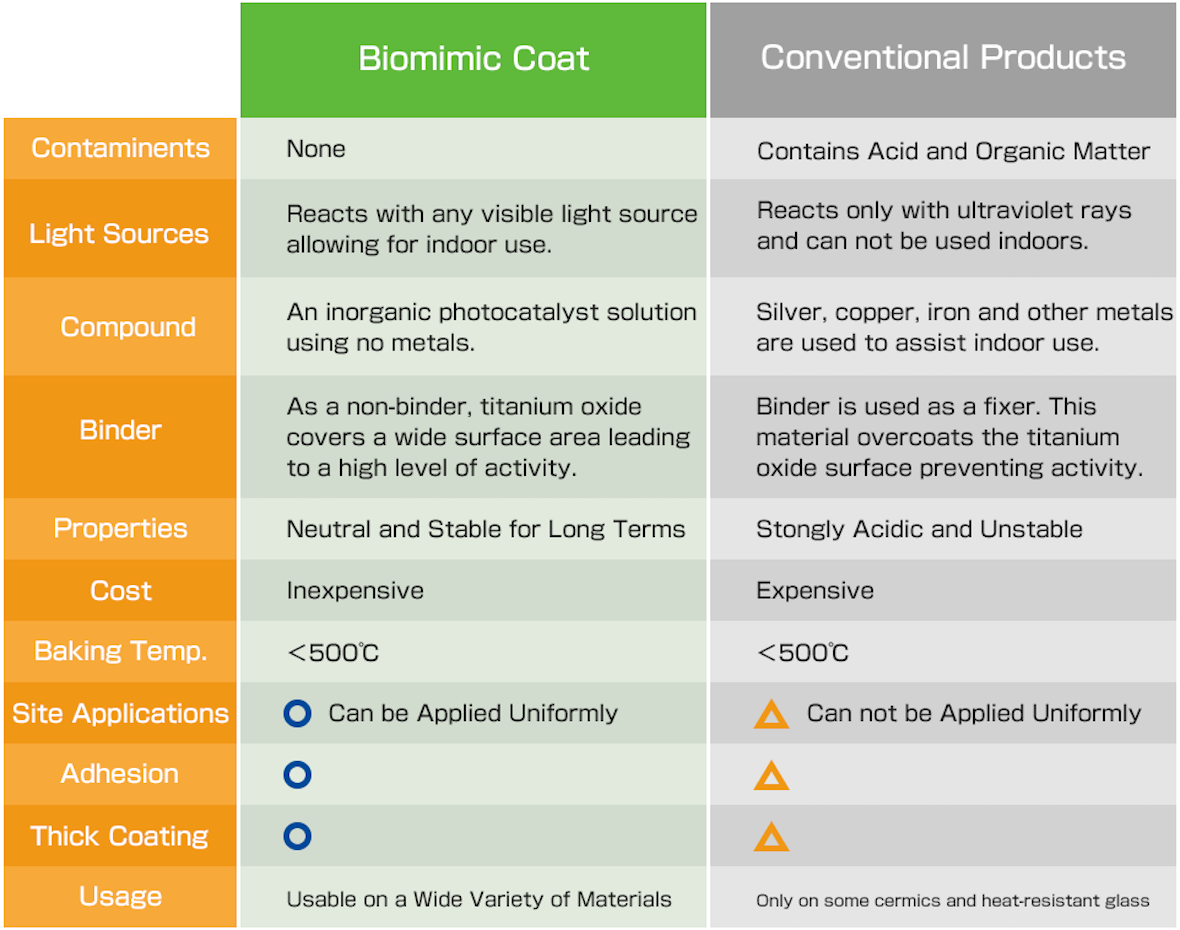
Differences Between Biomimic Coat and Conventional Photocatalyst Products
Effectiveness (Self Cleaning) with both Ultraviolet and Visible Light Fully Realized
Generally, photocatalysts react only to Ultraviolet (UV) Rays. Therefore, in the past, it was only possible to use them outdoors in sunny locations.
Biomimic Coat can be used not only in sunny places, but also in every outdoor location, including shady areas and other places without direct exposure to sunlight.
We have now succeeded in sufficiently producing the effect with any visible indoor light source.
Therefore, Biomimic can be used in any room, such as the bathroom, kitchen, basement and any other indoor location.
Experiment Test
Comparison of the Photocatalytic Effect with Visible Light
Four tiles were each coated with one of four photocatalysts (from manufacturers that claimed that they are effective indoors).
One was left untreated.
1. Fading Experiment (Ammonia Decay Experiment)
A colored ammonia solution was dripped onto each tile.
The speed at which the ammonia broke down when exposed to indoor lighting was compared and ranked.
-
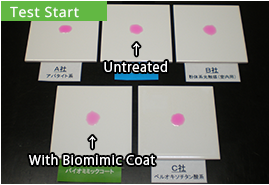
Test Start
Top From left: Product A (apatite type), Untreated, Product B (powder type for indoor use) / Bottom From Left: Biomimic Coat, Product C (peroxydisulfuric acid type)
-
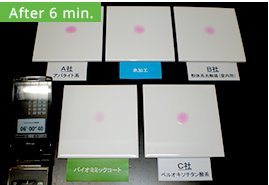
After 6 Minutes
We were able to determine that the ammonia on the tile treated with Biomimic Coat had mostly broken down. However, tiles treated with other products, as well as the untreated tile, had barely changed.
-
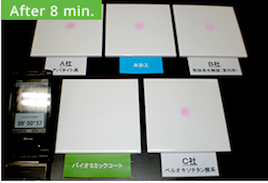
After 8 Minutes
The ammonia on the Biomimic Coat tile had completely broken down, but the tiles treated with other solutions still had the same light color as the untreated one. The slight color fading observed on these other test tiles was not due to the breakdown of the ammonia, but the evaporation of the ammonia solution. This was evident when it resulted in the same light color in both the treated and untreated tiles.
-
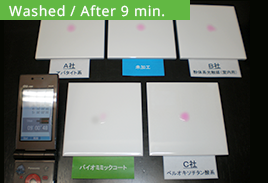
After the above experiment, all the tiles were rinsed with water and the solution applied again. The ammonia solution on the Biomimic Coat tile had broken down completely after 9 minutes, but the other three companies’ tiles remained the same dark color as the untreated tile. There was no change in the effectiveness of Biomimic Coat even after rinsing with water. The adhesion to the base material was strong enough that rinsing with water had no effect.
Conclusion
According to our experiment, of the four manufacturers claiming their photocatalyst coats react in visible light, only the Biomimic Coat successfully reacted to the visible light and broke down the contaminant. The other 3 products showed very little effect. Therefore, while Biomimic Coat was impressively successful in breaking down the contaminants, the other products that claimed to be effective were not. In this test, we also confirmed the superiority of the adhesion to the base material in our product.
Coating Organic Materials is Also Possible
Photocatalysts contain a component that destroys material through oxidative decomposition, so they were traditionally not able to be applied to organic materials. Biomimic Coat, however, consists of two layers (an inactive titanium oxide solution and an active titanium oxide solution), and application is now possible.
2 Coat Application on Organic Materials
-
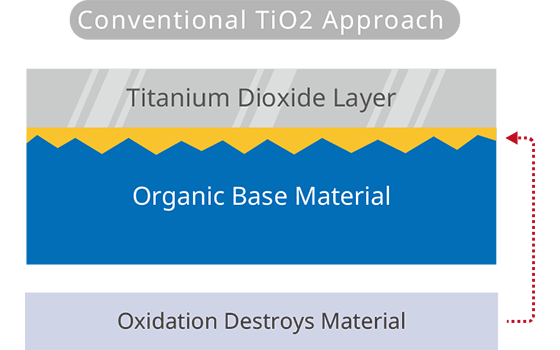
Conventional: TiO2 based
-
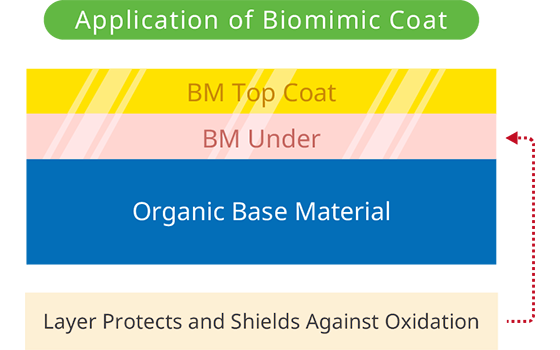
Biomimic Coat Application Process
Can Be Used on Variety Material
Biomimic Coat can be applied on any material. For example, application is possible on stainless steel, concrete, painted sufaces, wallpaper (PVC, etc.), FRP, wood, tile, tents, paper, stone, tatami mats, carpets, curtains, doors, furniture, clothing, towels and more.
See Examples of Biomimic Coat Case Studies-
Browse Catalog
Catalogs for our products can be found here. Please have a look.
Catalog Download Page -
Customer Support
For more information about our products
Contact Page
please contact us here.
Contact us by telephone or by using our contact form or brochure request form.
We are looking forward to hearing from you today.

